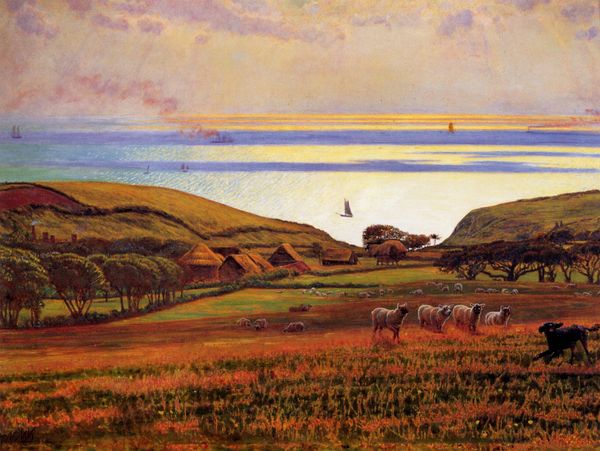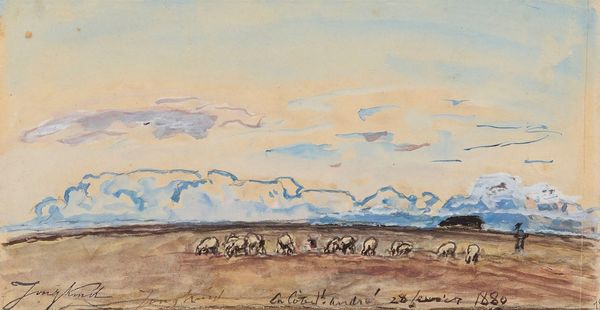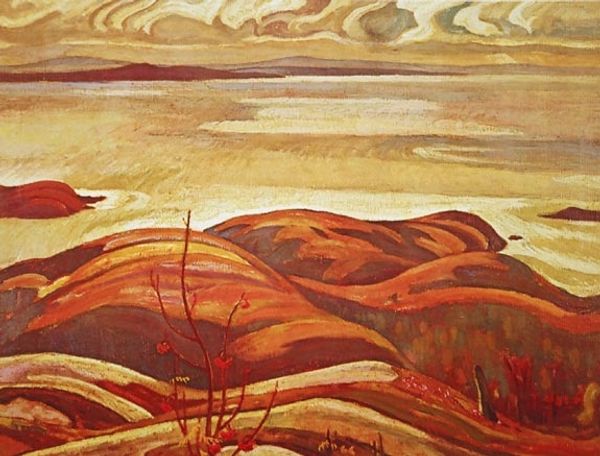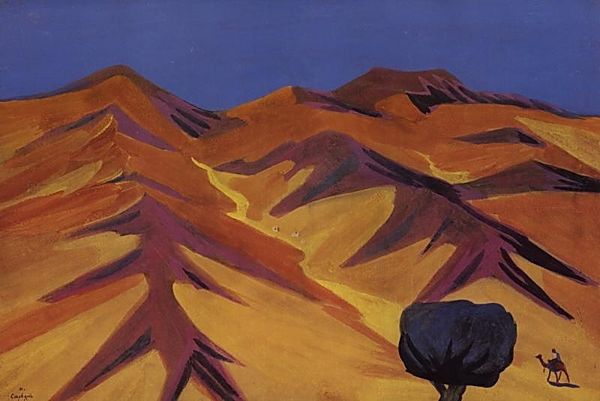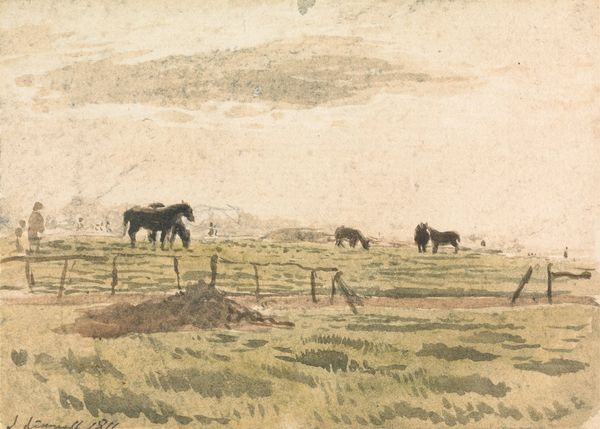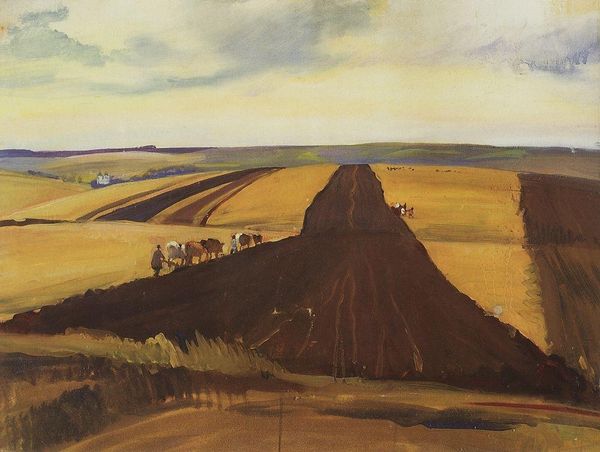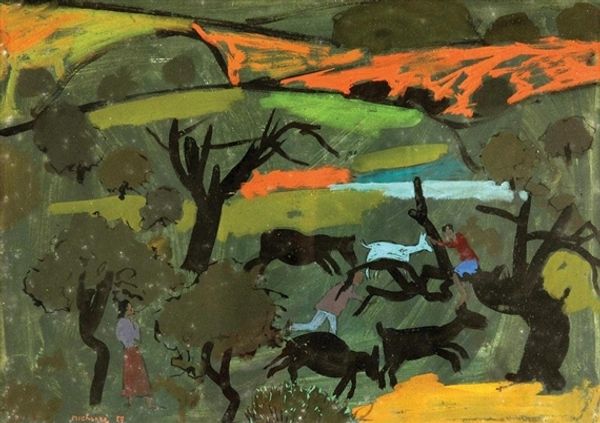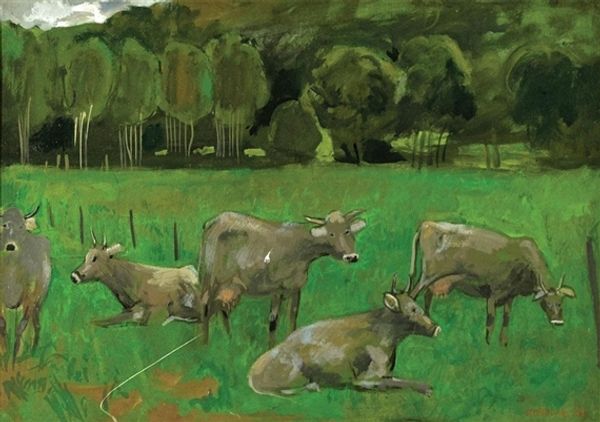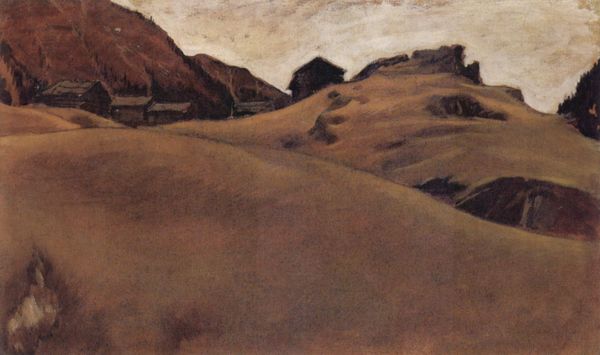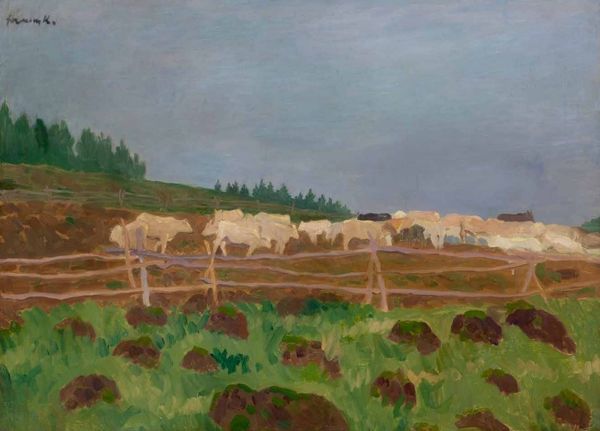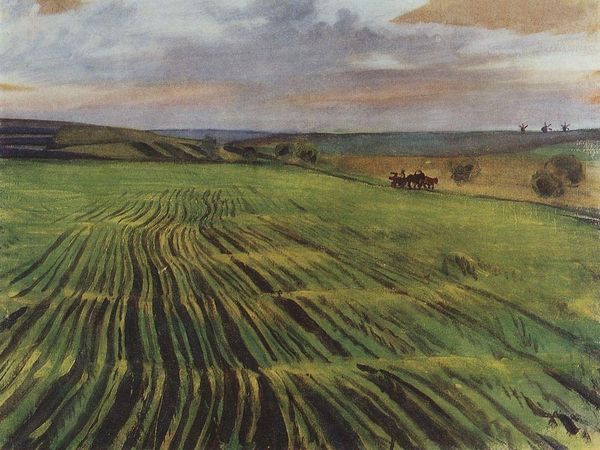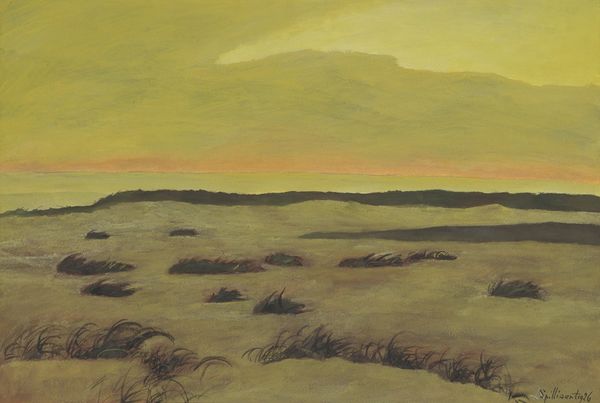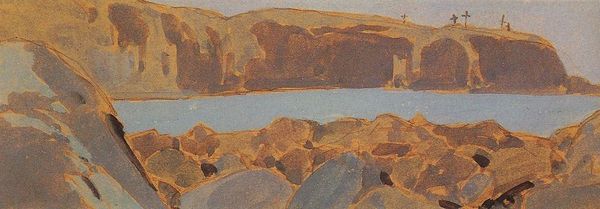
painting, oil-paint
#
animal
#
painting
#
oil-paint
#
landscape
#
figuration
#
oil painting
#
symbolism
Dimensions: 58 x 77 cm
Copyright: Public domain
Curator: Here we have Georges Lacombe's "Rams blacks, the year," an oil painting from 1892. What are your initial impressions? Editor: The immediate feeling is one of isolation, of hushed stillness. The stark simplicity of the rolling landscape and the dark, almost silhouetted sheep... It creates a mood of profound quiet. Curator: It’s interesting you say that. Lacombe was closely associated with the Symbolist movement, which often sought to convey emotion and inner states through simplified forms and subject matter. Consider the materiality of the paint itself; how the layering and brushstrokes contribute to the landscape’s undulations and sense of place. Also how the context of making such paintings may reflect the artist’s inner state. Editor: Yes, I see that. Look at how the paint is applied—thick in some areas, thinner in others, creating texture that mimics the variations of the terrain. There's a deliberate manipulation of form. Those dark rams are positioned almost as visual anchors. Their stark contrast draws the eye. It makes the viewer feel they are in the pasture along with the sheep. Curator: Precisely. And thinking about the landscape genre during this period, artists were pushing boundaries, exploring subjective experiences rather than simply documenting reality. The flatness in the distant areas makes you think about the symbolic meaning here rather than a literal translation of nature. Editor: And notice the elevated point of view that almost flattens the pictorial plane while at the same time opening onto distant buildings and windmills in a hazy background, giving depth. The color palette reinforces that solemn atmosphere—earth tones and muted greens dominate, with only a touch of pale light breaking through the clouds above. What was the historical landscape Lacombe existed in that fostered the emotional qualities evident here? Curator: We should remember that the labor-intensive nature of creating oil paintings influenced artistic production. Lacombe had close ties with other Post-Impressionist painters like Gauguin. There's definitely something about the repetitive curves that seem inspired by the physical rhythms of agricultural work. Editor: Agreed. Ultimately, the beauty lies in the way it captures a fleeting moment, a solitary observation transformed into a meditation on the quiet drama of the natural world. The formal relations alone convey it effectively. Curator: Right. I think, for me, looking at the physical means of making this piece helps contextualize the symbolic themes for a late 19th century viewing public that wanted something much different from the artworld.
Comments
No comments
Be the first to comment and join the conversation on the ultimate creative platform.
